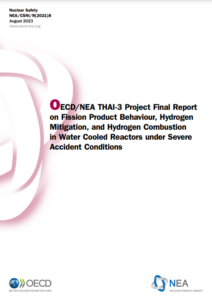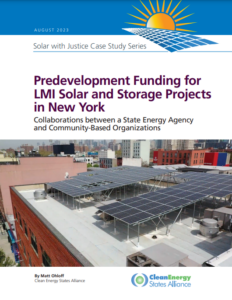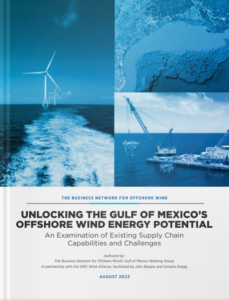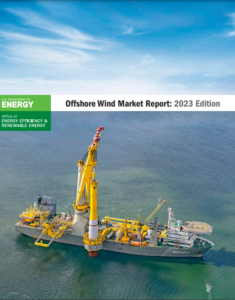The OurEnergyLibrary aggregates and indexes publicly available fact sheets, journal articles, reports, studies, and other publications on U.S. energy topics. It is updated every week to include the most recent energy resources from academia, government, industry, non-profits, think tanks, and trade associations. Suggest a resource by emailing us at info@ourenergypolicy.org.
Resource Library
The objective of the NEA THAI-3 project was to address open questions concerning the behaviour of hydrogen, iodine and aerosols under severe accident conditions in the containment of water cooled reactors. Understanding the processes taking place during such events is essential to evaluating the challenge posed on containment integrity (due to hydrogen combustion) and for evaluating the amount of airborne radioactivity (iodine and aerosols) during such severe accidents. The project also aimed to contribute to the validation and further development of advanced codes used for reactor applications, e.g. by providing experimental data for code benchmark exercises.
The NEA THAI-3 project …
View Full Resource“Renewable Gas: Not A Climate-Aligned Solution for Buildings” covers biogas and synthetic gas and why neither are viable alternatives to building electrification.
Electrification is the most viable option to fully decarbonize Michigan’s buildings. Alternative fuels like renewable gas are more expensive, limited in supply, and can still cause significant environmental and health impacts. Michigan must plan to transition away from existing gas infrastructure as part of its clean energy strategy.…
“All Electric Construction: A Good Deal” details the cost saving opportunity for constructing new homes to be all-electric and avoiding gas pipeline extensions.
All-electric building codes lead to lower construction costs in Michigan by encouraging developers to bypass the cost and complexity of installing new gas lines. These homes have roughly the same utility bills as mixed-fuel homes, which use both gas and electricity. Those savings are projected to improve over time as gas prices rise.…
The Clean Energy States Alliance (CESA) prepared this case study to describe how New York’s state energy office, the New York State Energy Research and Development Authority (NYSERDA), collaborated with community-based organizations (CBOs) while administering the state’s PON 3414 Affordable Solar and Storage Predevelopment and Technical Assistance Program. This program has benefitted many low-and-moderate income (LMI) residents in New York by providing equitable access to solar energy and/or energy storage. The program is flexible to the needs of CBOs representing LMI communities, ensures the benefits of the solar and/or storage projects flow to LMI residents, and provides funding for the …
View Full ResourceThe Government of Sri Lanka has set a goal to have 70% of its electricity generated by renewable energy sources by 2030, and achieve carbon neutrality in electricity generation by 2050. A currently untapped resource for the country that can help achieve these goals is offshore wind.
Sri Lanka has significant potential for offshore wind, and there is already private sector interest in developing projects. The additional clean energy capacity that could be generated by offshore wind can not only support the country’s transition to net zero carbon, but also increase security of supply and help reduce the economic burden …
View Full ResourceThe Network’s report Unlocking the Gulf of Mexico’s Offshore Wind Energy Potential addresses the region’s unique potential for offshore wind development. Authored in partnership with GNO Wind Alliance, the report coincides with the Bureau of Ocean Energy Management’s (BOEM) first lease sale in the Gulf of Mexico in August 2023.
The report’s detailed examination of the Gulf of Mexico includes key information on the region’s offshore wind supply chain opportunities, associated challenges, and the work being done to address these hurdles. It also provides insight for businesses looking to take advantage of this new frontier for the U.S. offshore wind …
View Full ResourceThe Offshore Wind Market Report: 2023 Edition provides detailed information on the U.S. and global offshore wind energy industries to inform policymakers, researchers, and analysts about technology, economic, and market trends. The scope of the report covers the status of over 293 global operating offshore wind energy projects as well as the broader global pipeline of projects in various stages of development through December 31, 2022. To provide up-to-date information and discussion on this emerging industry in the United States, this report tracks the significant U.S. domestic industry progress and events from January 1, 2022, through May 31, 2023.…
View Full ResourceWind power additions in the United States totaled 8.5 gigawatts (GW) in 2022.1 Wind power growth has historically been supported by the industry’s primary federal incentive—the production tax credit (PTC)—as well as myriad state-level policies. Long-term improvements in the cost and performance of wind power technologies have also been key drivers for wind additions. Nonetheless, 2022 was a relatively slow year in terms of new wind power deployment—the lowest since 2018—due in part to ongoing supply chain pressures, higher interest rates, and interconnection and siting challenges, but also the reduction in the value of the PTC that was in place …
View Full Resource“Renewable Gas: Not A Climate-Aligned Solution for Buildings” covers biogas and synthetic gas and why neither are viable alternatives to building electrification.
Electrification is the most viable option to fully decarbonize Nevada’s buildings. Alternative fuels like renewable gas are more expensive, limited in supply, and can still cause significant environmental and health impacts. Nevada must plan to transition away from existing gas infrastructure as part of its clean energy strategy.…
“All Electric Construction: A Good Deal” details the cost saving opportunity for constructing new homes to be all-electric and avoiding gas pipeline extensions.
All-electric building codes lead to lower construction costs in Nevada by encouraging developers to bypass the cost and complexity of installing new gas lines. These homes have roughly the same utility bills as mixed-fuel homes, which use both gas and electricity. Those savings are projected to improve over time as gas prices rise.…









